Assessment of Food Toxicology, Diet and Nutrition
A special issue of Foods (ISSN 2304-8158). This special issue belongs to the section "Food Toxicology".
Deadline for manuscript submissions: closed (15 January 2024) | Viewed by 4071
Special Issue Editors
Interests: toxicology; food safety; risk assessment; toxic risk; toxic metals; trace elements
Special Issues, Collections and Topics in MDPI journals
Interests: toxicology; food safety; risk assessment; toxic risk; toxic metals; trace elements
Special Issues, Collections and Topics in MDPI journals
Special Issue Information
Dear Colleagues,
Food is the basis of nutrition, providing us with the nutrients and other elements essential for the proper functioning of the body. However, in recent years, increased anthropogenic pressure and pollution, as well as a fast-paced lifestyle, have had a negative impact on nutrition and food quality. For example, industrial food products have been singled out for their lack of nutrients and their negative impact on health. Recent studies have also linked environmental pollution to the high presence of certain elements that are harmful to health, such as toxic metals. This is why several research groups have focused on determining the content of toxic metals and other substances harmful to health in foods, with the aim of monitoring contamination and assessing dietary exposure. This Special Issue is open to receive research results and/or quality reviews on the nutritional aspect of foods and/or levels of contaminants in these foods.
Prof. Dr. Arturo Hardisson
Dr. Soraya Paz Montelongo
Guest Editors
Manuscript Submission Information
Manuscripts should be submitted online at www.mdpi.com by registering and logging in to this website. Once you are registered, click here to go to the submission form. Manuscripts can be submitted until the deadline. All submissions that pass pre-check are peer-reviewed. Accepted papers will be published continuously in the journal (as soon as accepted) and will be listed together on the special issue website. Research articles, review articles as well as short communications are invited. For planned papers, a title and short abstract (about 100 words) can be sent to the Editorial Office for announcement on this website.
Submitted manuscripts should not have been published previously, nor be under consideration for publication elsewhere (except conference proceedings papers). All manuscripts are thoroughly refereed through a single-blind peer-review process. A guide for authors and other relevant information for submission of manuscripts is available on the Instructions for Authors page. Foods is an international peer-reviewed open access semimonthly journal published by MDPI.
Please visit the Instructions for Authors page before submitting a manuscript. The Article Processing Charge (APC) for publication in this open access journal is 2900 CHF (Swiss Francs). Submitted papers should be well formatted and use good English. Authors may use MDPI's English editing service prior to publication or during author revisions.
Keywords
- food toxicants
- food contaminants
- food hazards
- innovative techniques and methods
- natural toxins
- toxic metals
- trace elements
- allergens
- pesticides
- residues
- emerging contaminants
- risk analysis
- risk assessment
- food toxicology
- food safety
- pollutants
- environmental pollution
- risk management
- risk communication
- regulatory
- public health
- daily intake
- trace elements
- essential elements
- dietary reference values
- dietary requirements







